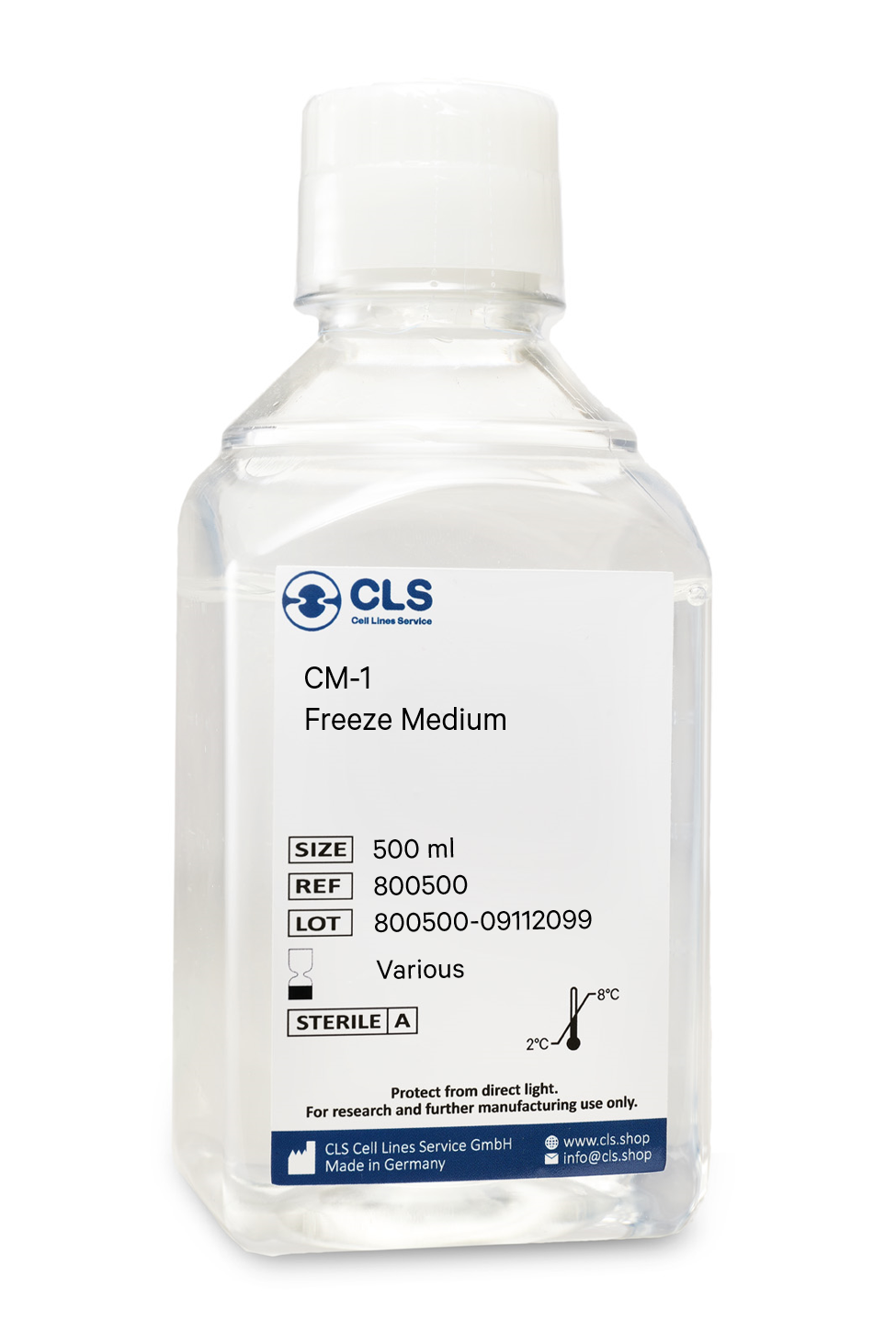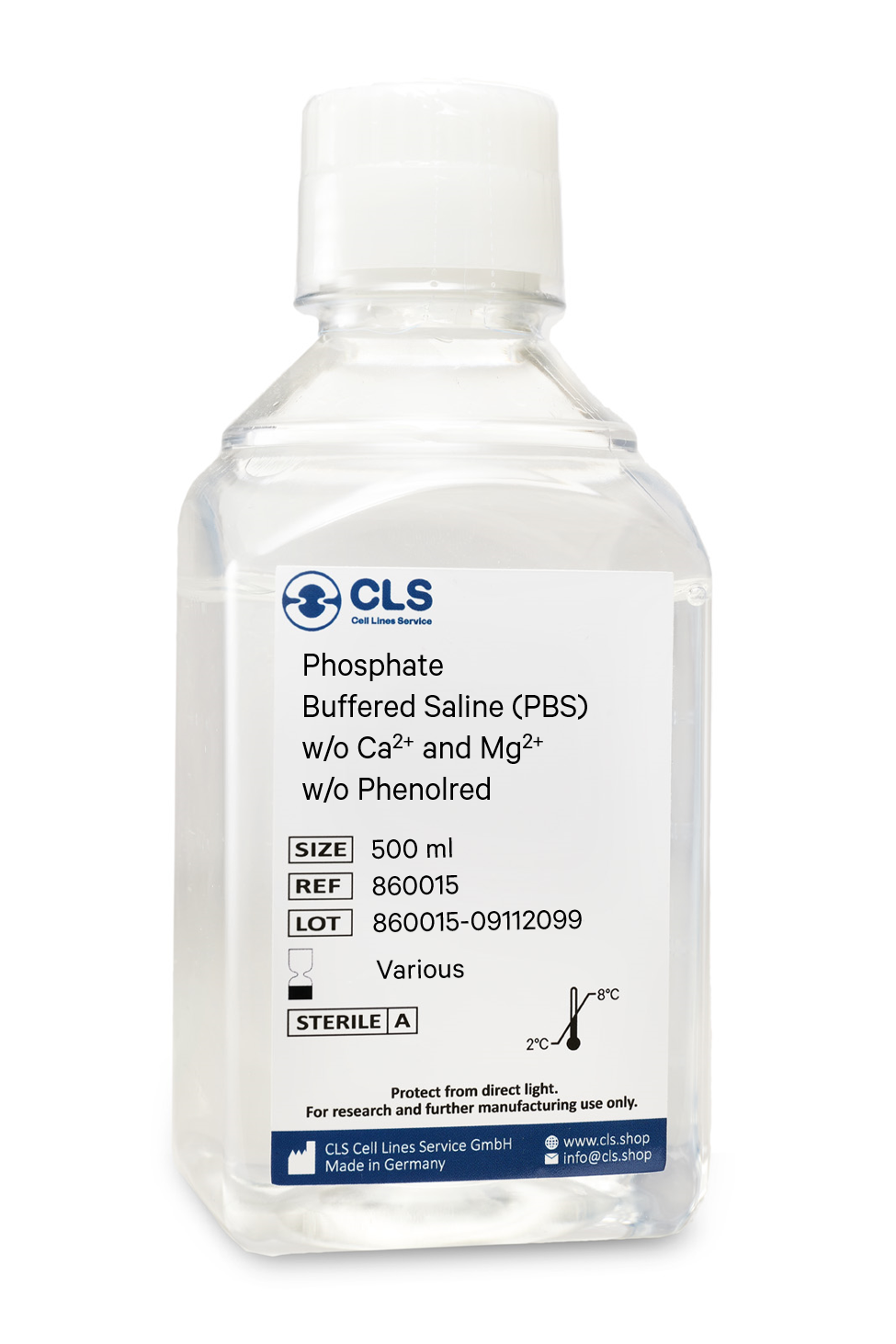DMS-79 Cells
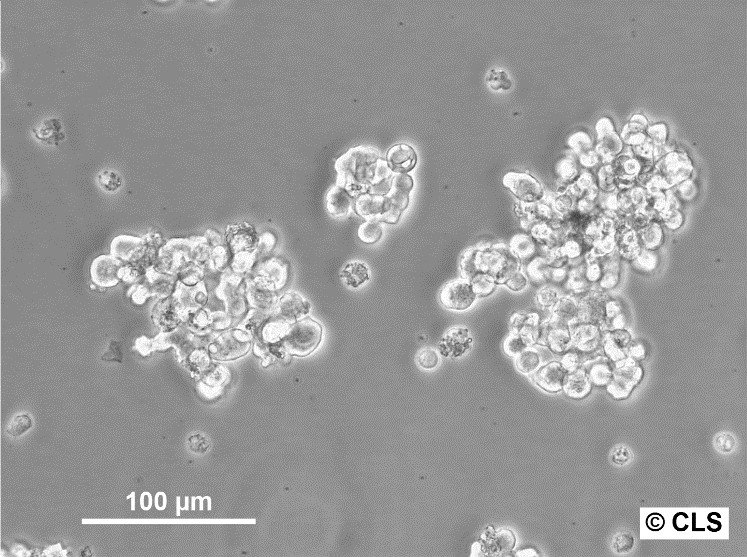
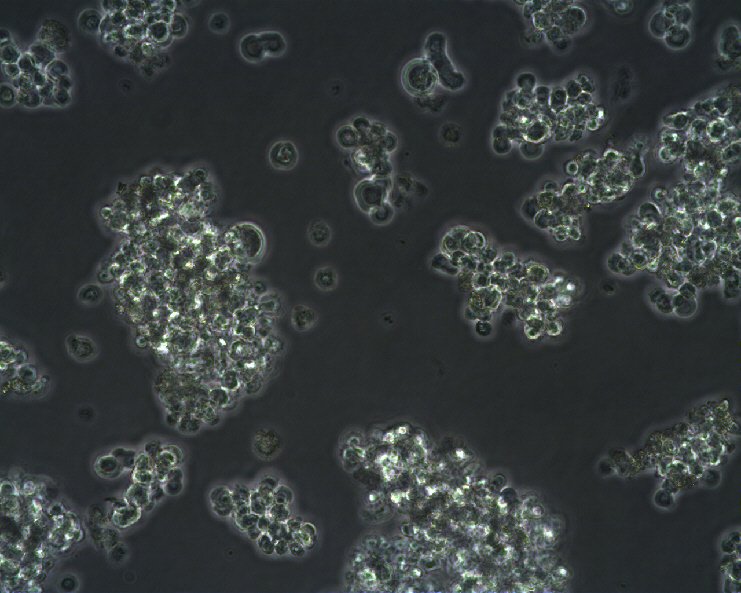
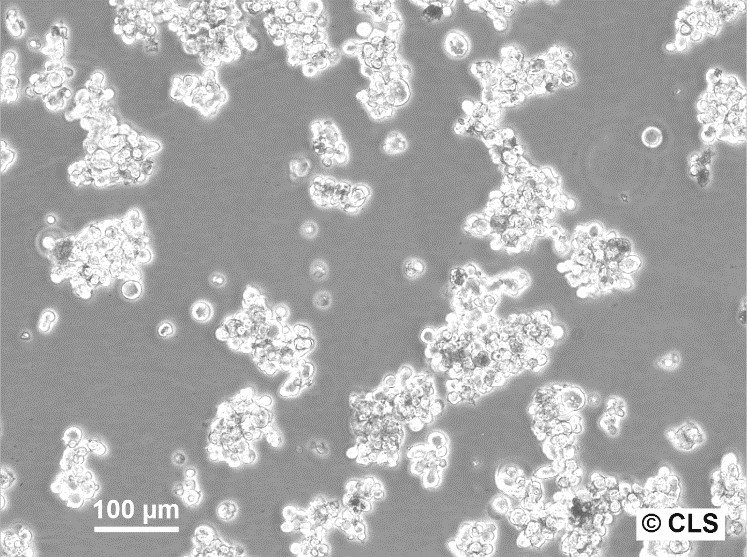
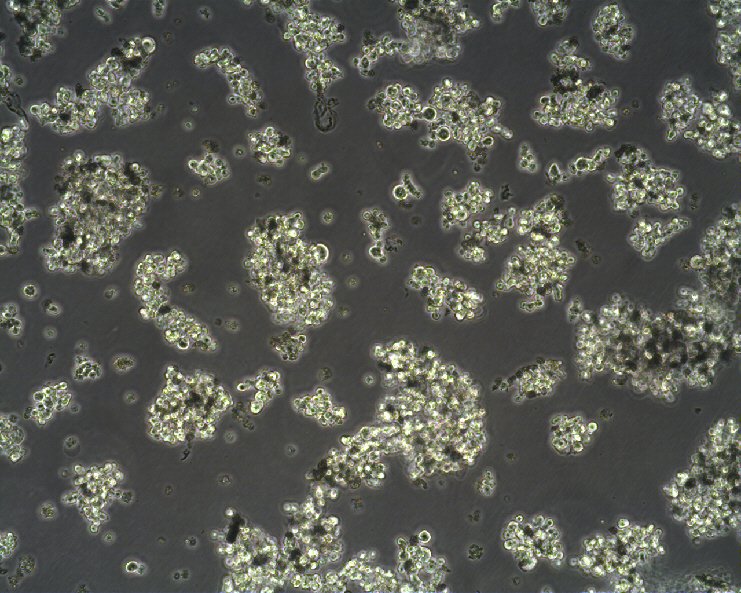












General information
| Description | The line was established from cells in the pleural fluid of a patient with small cell carcinoma of the lung. The patient had previously been treated with cytoxan, vincristine, methotrexate and radiation therapy. The cells express HLA class I and class II antigens. |
|---|---|
| Organism | Human |
| Tissue | Lung |
| Disease | Carcinoma, azaserine induced |
| Metastatic site | Pleural effusion |
| Synonyms | DMS 79, DMS79 |
Characteristics
| Age | 65 years |
|---|---|
| Gender | Male |
| Ethnicity | Caucasian |
| Growth properties | Aggregates in suspension |
Identifiers / Biosafety / Citation
| Citation | DMS-79 (Cytion catalog number 300164) |
|---|---|
| Biosafety level | 1 |
Expression / Mutation
| Receptors expressed | Epidermal growth factor (EGF) |
|---|---|
| Antigen expression | Leu 7, My23, Class 1 HLA, Class 2 HLA |
| Oncogenes | c-myc +, N-myc +, c-raf-1 +, Ha-ras +, Ki-ras +, N-ras +, v-fes -, v-fms - |
| Tumorigenic | Yes, in nude mice |
| Products | Adrenocorticotropin (adrenocorticotropic hormone, ACTH), bombesin, calcitonin, corticotropin, beta endorphin, 17 beta estradiol, lipotropin, oxytocin - neurophysin (OT-NP), parathormone, somatostatin-like immunoreactivity (SRIF) |
Handling
| Culture Medium | RPMI 1640, w: 2.1 mM stable Glutamine, w: 2.0 g/L NaHCO3 (Cytion article number 820700a) |
|---|---|
| Medium supplements | Supplement the medium with 10% FBS |
| Doubling time | 96 hours |
| Subculturing | Once or twice a week add 5 ml of fresh cell culture medium, as soon as the culture medium gets acidic. Subculture as soon as many very large clusters are observed. Dissociate the clusters by collecting the cells, rinsing once using PBS without calcium/magnesium and adding 3-5 ml Accutase. Incubate at 37 degree Celsius for 10minutes. Collect the cells following centrifugation, resuspend in fresh cell culture medium and count. Start cultures at 2-4 x 10^4 cells/ml. |
| Split ratio | A ratio of 1:2 to 1:4 is recommended |
| Seeding density | 2 to 4 x 10^4 cells/cm^2 |
| Fluid renewal | 2 to 3 times per week |
| Freezing recovery | After thawing, allow the cells to recover from the freezing process for at least 24 hours. |
| Freeze medium | CM-1 (Cytion catalog number 800100) or CM-ACF (Cytion catalog number 806100) |
| Handling of cryopreserved cultures |
|
Quality control / Genetic profile / HLA
| Sterility | Mycoplasma contamination is excluded using both PCR-based assays and luminescence-based mycoplasma detection methods. To ensure there is no bacterial, fungal, or yeast contamination, cell cultures are subjected to daily visual inspections. |
|---|---|
| STR profile |
Amelogenin: x,y
CSF1PO: 10
D13S317: 11
D16S539: 12
D5S818: 10
D7S820: 9,11
TH01: 8
TPOX: 8
vWA: 18
D3S1358: 8
D21S11: 30
D18S51: 14,17
Penta E: 7
Penta D: 11,13
D8S1179: 12,14
FGA: 21
|
| HLA alleles |
A*: 01:01:01, 02:01:01
B*: 08:01:01, 35:01:01
C*: 04:01:01, 07:01:01
DRB1*: 11:01:01, 14:01:01
DQA1*: 01:04:01, 05:05:01
DQB1*: 03:01:01, 05:03:01
DPB1*: 03:01:01, 10:01:01
E: 01:01, 01:03
|
Required products
In biological research, the cryopreservation of mammalian cells is an invaluable tool. Successful preservation of cells is a top priority given that losing a cell line to contamination or improper storage conditions leads to lost time and money, ultimately delaying research results. Once the cells have been transferred from a cell growth medium to a freezing medium, the cells are typically frozen at a regulated rate and stored in liquid nitrogen vapor or at below -130°C in a mechanical deep freezer. The freeze medium CM-1 enables cryopreservation of cells at below -130°C (or in liquid nitrogen), essentially eliminating the need for an additional, costly ultralow freezer and eliminating time-consuming and demanding controlled rate freezing processes. Simply collect the cells, aspirate the growth medium, resuspend in CM-1, transfer to a cryovial, and store the vial at below -130 °C.
Long shelf-life
CM-1 is a serum-containing, ready-to-use cryopreservation medium that can be stored in the refrigerator for up to one year.
Trusted by hundreds of researchers
Our advanced cell freezing medium CM-1 is a market-leading product in Germany and Europe and is distinguished by numerous publications involving hundreds of different cell lines worldwide. We tested it with more than 1000 cell lines from our proprietary cell bank.
Optimized ingredients
CM-1 does contain serum products. Serum-containing cryopreservation mediums optimally protect the cells whilst being frozen and have the advantage of high recovery rates. As CM-1 has been tested with a multitude of cell lines, you can rest assured that your cells always recover well.
Contains FBS, DMSO, glucose, salts
Buffering capacity pH = 7.2 to 7.6
Applications & Validation
The cells preserved in our CM-1 freeze medium can be used for cell counting, viability and cryopreservation, cell culture, mammalian cell culture, gene expression analysis and genotyping, in vitro transcription, and polymerase chain reactions. Each batch's efficacy is evaluated using CHO-K1 cells. Each batch is tested for pH, osmolality, sterility, and endotoxins to ensure high quality.
Phosphate-buffered saline (PBS) is a versatile buffer solution used in many biological and chemical applications, as well as tissue processing. Our PBS solution is formulated with high-quality ingredients to ensure a constant pH during experiments. The osmolarity and ion concentrations of our PBS solution are matched to those of the human body, making it isotonic and non-toxic to most cells.
Composition of our PBS Solution
Our PBS solution is a pH-adjusted blend of ultrapure-grade phosphate buffers and saline solutions. At a 1X working concentration, it contains 137 mM NaCl, 2.7 mM KCl, 8 mM Na2HPO4, and 2 mM KH2PO4. We have chosen this composition based on CSHL protocols and Molecular cloning by Sambrook, which are well-established standards in the research community.
Applications of our PBS Solution
Our PBS solution is ideal for a wide range of applications in biological research. Its isotonic and non-toxic properties make it perfect for substance dilution and cell container rinsing. Our PBS solution with EDTA can also be used to disengage attached and clumped cells. However, it is important to note that divalent metals such as zinc cannot be added to PBS as this may result in precipitation. In such cases, Good's buffers are recommended. Moreover, our PBS solution has been shown to be an acceptable alternative to viral transport medium for the transport and storage of RNA viruses, such as SARS-CoV-2.
Storage of our PBS Solution
Our PBS solution can be stored at room temperature, making it easy to use and access.
To sum up
In summary, our PBS solution is an essential component in many biological and chemical experiments. Its isotonic and non-toxic properties make it suitable for numerous applications, from cell culture to viral transport medium. By choosing our high-quality PBS solution, researchers can optimize their experiments and ensure accurate and reliable results.
Composition
Components
mg/L
Inorganic Salts
Potassium chloride
200,00
Potassium dihydrogen phosphate
200,00
Sodium chloride
8,000.00
di-Sodium hydrogen phosphate anhydrous
1,150.00

